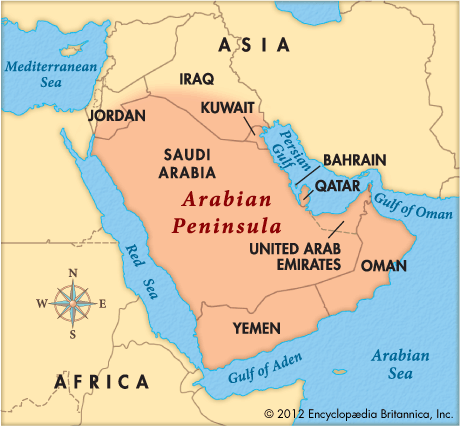

The Al-Massirah television station in Yemen, which supports the Ansurallah Movement (Houthis), broadcast a news report May 11 showing civilians standing by a downed F16 bomber used by Morocco, part of the alliance currently waging war on this Middle Eastern state.
The U.S.-made fighter plane is the same aircraft used by other members of the Saudi Arabian and Gulf Cooperation Council waging an aerial war against Yemen, the most underdeveloped state in the region.
Morocco, one of only three remaining monarchies still reigning on the African continent, joined the alliance “to restore legitimacy in Yemen” at the war’s inception in late March. The decision to join the war against Yemen was made by King Mohammed VI absent any consultation with parliament. (The Australian, May 11)
Reports indicate that Morocco has provided six aircraft to the Saudi-GCC operational command, although there is virtually no information about the North African country’s involvement. These F16 jets appear to be the same type used in the Pentagon-led strikes against the Islamic State in Iraq and Syria.
U.S.-backed war kills many
Since March 26, the Saudi-GCC coalition has dropped an undetermined number of ordnance on Yemen in a failed attempt to destroy the Shiite-based Ansurallah forces, which have formed an alliance with other political interests to oppose Washington’s attempt to control this nation through Riyadh. This imperialist-backed coalition, which receives logistical and intelligence support from Washington, has intensified its bombing campaign against Yemen in an attempt to reinstall the fugitive President Abed Rabbo Mansour Hadi, who now lives in exile in Saudi Arabia.
According to Press TV on May 11: “Saudi aerial attacks on the impoverished Arab nation continue to claim lives. In the latest raids, Saudi warplanes targeted the northwestern city of Ta’izz injuring 11 people. Earlier, Saudi jets attacked targets in Sa’ada and Hajjah provinces, killing at least five people. They also pounded a district in Bayda Province, leaving two people dead.” Also on May 11, it was estimated that 11 people were killed and more than 160 injured as Saudi jets struck an arms installation in the capital city of Sana’a.
Press TV reports that the raids set off numerous explosions, scattering pieces of artillery, with one crashing into the roof of a residential structure. After the attacks, clouds of smoke filled the sky and additional materials were scattered across other neighborhoods.
Just days before, on May 7, the Saudi foreign ministry announced a five-day pause in the bombing to allow relief to be delivered to the people impacted by the bombing and the fighting on the ground. The Saudi-GCC alliance gave the Houthis an ultimatum that they must stop their resistance against the bombings or face more aggressive military attacks.
This announcement was made by Riyadh during the May 6-7 visit by U.S. Secretary of State John Kerry, who said that Washington supported the war against Yemen and made threats against Iran, which is politically supporting the Ansurallah Movement. Kerry also called for a ceasefire and said the U.S. would supply $68 million in humanitarian assistance to Yemen.
Of U.S. foreign policy about the war, Kerry stated, “We have urged all sides … to comply with humanitarian law and to take every precaution to keep civilians out of … harm’s way, as well as to provide the opportunity for humanitarian assistance … to be delivered.” (VOA, May 11) Nonetheless, the Saudi-GCC alliance, bolstered and coordinated by Washington, has consistently bombed residential areas, internally displaced persons camps, airports and telecommunications infrastructure, creating enormous dislocation and outmigration.
After visiting Saudi Arabia, Kerry then went to the Horn of Africa nation of Djibouti, which houses the largest Pentagon military base on the continent at Camp Lemonnier. The government of Djibouti has done more than the U.S. itself in evacuating distressed people fleeing the war in neighboring Yemen.
Aid shipments face Saudi-GCC blockade
Although the U.S. has reached a “deal” with Tehran over its nuclear technology capabilities, the hostility toward the country continues. Many observers believe that the war against Yemen is designed to weaken the burgeoning influence of Iran throughout the Gulf region.
Several attempts by Iranian vessels and planes to provide assistance to the civilian population in Yemen have been rebuffed by Saudi vessels, backed up by U.S. warships.
Tehran, however, has reiterated its commitment to address the situation in Yemen. As Press TV reported, “Iran’s Foreign Minister Mohammad Javad Zarif says the Islamic Republic is prepared to provide Yemen with any humanitarian aid and help the impoverished state work out a political solution to the ongoing crisis there.”
At a combined press conference in Tehran with South African Minister of International Relations and Cooperation Maite Nkoana-Mashabane, Zarif said, “Since the beginning of the crisis in Yemen and the start of the illegal attacks on the country, the Islamic Republic of Iran has explicitly announced that the Yemeni [crisis] cannot be settled militarily and that these attacks will have no outcome but the killing of defenseless people.”
First Secretary of Workers World Party This International Workers Day is anything but normal This…
Supporters of political prisoner Mumia Abu Jamal hosted a vibrant and revolutionary program in honor…
Chapters of Students for Justice in Palestine (SJP) jointly organized a demonstration in New York…
U.S. imperialism suffered its second historical defeat in history on April 30, 1975, at the…
In a video that has gone viral on social media, the FBI and Michigan state…
Workers World Party salutes the 50th anniversary of the stunning victory of the long struggle…